WW II - Pacific (2 of 4)
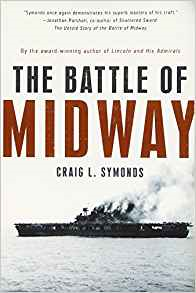
The Battle of Midway, by Craig L Symonds (2002 - 332 pp)
The naval battle that broke Japan. With the ability to decipher Japanese codes, the U.S. baited the trap and destroyed 4 carriers, the heart of the Japanese fleet.
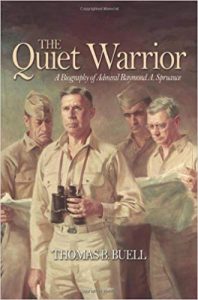 The Quiet Warrior: Biography of Raymond A. Spruance, by Thomas Buell (2009 - 460 pp)
The Quiet Warrior: Biography of Raymond A. Spruance, by Thomas Buell (2009 - 460 pp)
Comprehensive bio of one of WW II's greats. Raymond Spruance was on scene commander responsible for the famous American victory at Midway and went on to be Commandant of the Naval War College. A steady, cautious but opportunistic leader, he was protective of those under him...and won an amazing victory.
 The Conquering Tide: War in the Pacific Islands, by Ian W. Toll (2016)
The Conquering Tide: War in the Pacific Islands, by Ian W. Toll (2016)
Magnificent overview of the war in the central pacific by noted Naval historian Toll, from Midway to the climactic battles of the Marianas, Iwo Jima and Okinawa.
 Midway: The Incredible Victory, by Walter Lord (1967 - 306pp)
Midway: The Incredible Victory, by Walter Lord (1967 - 306pp)
This classic of Naval literature was the the first to detail for general readers the amazing events at Midway and is a must-read for any Naval history buff.
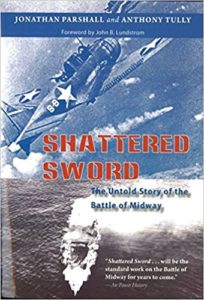
Shattered Sword, by Jonathan Parshall (2007 - 640pp)
Outstanding groundbreaking history of Midway from the Japanese perspective, causes of their defeat both logistical, cultural and circumstantial.
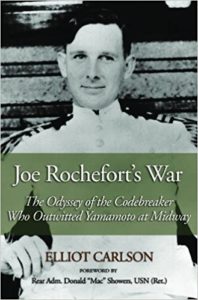
Joe Rochfort's War, Elliot Carlson (2011 - 616pp)
One of the war's true heroes, Rochefort broke the Japanese code, deciphered plans for Midway and thoroughly embarrassed his off-base superiors in DC .
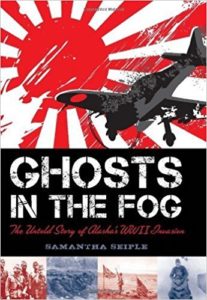 Ghosts in the Fog, by Samantha Seiple (2011 - 342 pp)
Ghosts in the Fog, by Samantha Seiple (2011 - 342 pp)
The unknown story of the Japanese invasion of the Aleutians in June, 1942, the many naval battles during attempts to supply them and the eventual suicidal final battles to-the-last-man.
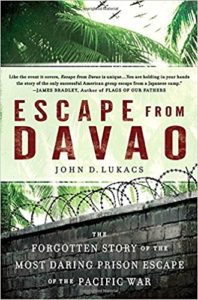
Escape from Daveo, by John D. Lucaks (2011 - 448pp)
Tense account of the dramatic escape of 10 U.S. POW's in the Philippines after their capture by the Japanese and ordeals at Bataan and Corregidor.
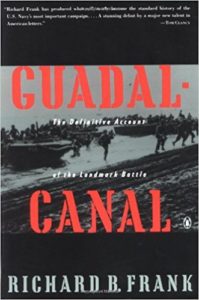
Guadalcanal, by Richard B. Frank (1992 - 886pp)
Excellent, gripping, highly detailed account of this prolonged brutal struggle for the Solomon Islands and critical Allied access to S.E. Asia and Australia.
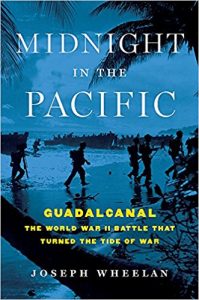 Midnight in the Pacific: Guadalcanal - the World War II Battle that Turned the Tide of War, by Joseph Wheelan (2017 - 400pp)
Midnight in the Pacific: Guadalcanal - the World War II Battle that Turned the Tide of War, by Joseph Wheelan (2017 - 400pp)
This is by far the best, most recent comprehensive book on the great naval, land and air battles of Guadalcanal. Not to be missed.
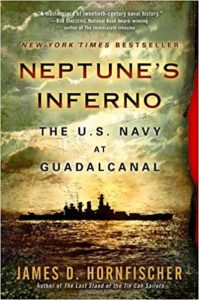 Neptune's Inferno, by James D. Hornfischer (2012 - 544pp)
Neptune's Inferno, by James D. Hornfischer (2012 - 544pp)
Engaging, dramatic saga of the 7 major naval engagements around Guadalcanal, new uses of radar, chaotic night battles and innumerable carrier air ops.
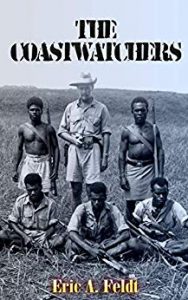 Lonely Vigil: Coastwatchers of the Solomons, by Walter Lord, (1977 - 302 pp)
Lonely Vigil: Coastwatchers of the Solomons, by Walter Lord, (1977 - 302 pp)
The great Walter Lord has done us all a great service by bringing to life the heroic efforts of the Aussie and British Coastwatchers. Stationed on 12 separate Solomon islands they provided an early warning system that saved US troops and planes on Guadalcanal.
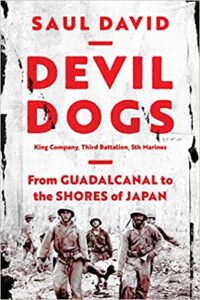 Devil Dogs: King Company, 5th Marines; From Guadalcanal to the Shores of Japan, By Saul David (2022 - 628 pp)
Devil Dogs: King Company, 5th Marines; From Guadalcanal to the Shores of Japan, By Saul David (2022 - 628 pp)
Saul David's masterful account of the 5th Marines in WW II is an easy to read account of their many heroic conflicts from Guadalcanal to Bougainville and New Britain. Great description of the unbelievably short planning window (5 weeks) from inception to invasion at Guadalcanal, the impact of the famous Goettge Patrol, and Japanese Colonel Ishiki's humiliating assault at the Tenaru River.
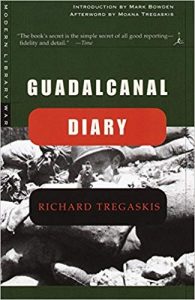 Guadalcanal Diary, by Richard Tregaskis ( 1958 - 252 pp)
Guadalcanal Diary, by Richard Tregaskis ( 1958 - 252 pp)
A celebrated classic of marine corps and naval literature, reporter Tregaskis embeds himself with the 1st marines and gives a soldiers eye view of the many battles, privations that they faced, the unbelievable ongoing bombardments and attacks by an increasingly desperate foe.
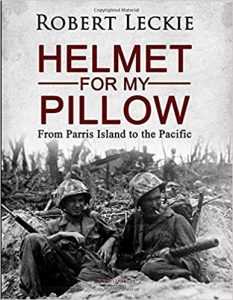 Helmet for my Pillow:From Paris Island to the Pacific, by Robert Leckie (1979 - 148 pp)
Helmet for my Pillow:From Paris Island to the Pacific, by Robert Leckie (1979 - 148 pp)
On of the classics of the Pacific war by a fabulous writer. Leckie is at his best describing the 1st Marines at Guadalcanal. Of particular note is his vivid description of their last days there, and subsequent marvelous reception and treatment at the hands of the Australians who they saved.
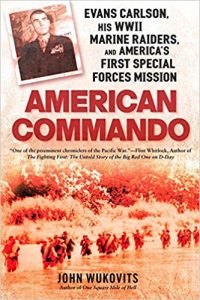 American Commando: Evans Carlson and his WW II Marine Raiders, by John Wukovits
American Commando: Evans Carlson and his WW II Marine Raiders, by John Wukovits
(2010 - 368 pp)
Gripping account of Evans Carlson (inventor of the phrase :Gung-Ho") and the birth of the OSS on Guadalcanal by one of our favorite writers. Carlson's Raiders infiltrated behind Japanese lines for 30 days where they disrupted Japanese supplies and killed 500.
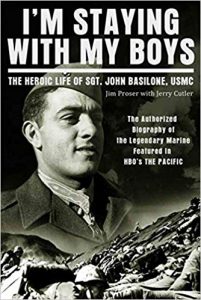 I'm Staying with My Boys: The Heroic Life of Sgt John Basilone, USMC, by Jim Proser (2004 - 324 pp)
I'm Staying with My Boys: The Heroic Life of Sgt John Basilone, USMC, by Jim Proser (2004 - 324 pp)
From the jungles of Guadalcanal to Iwo Jima, Sgt John Basilone fought his way to glory and became a national hero selling War Bonds in the U.S. The subject of HBO special The Pacific, Basilone was tragically killed on Iwo Jima
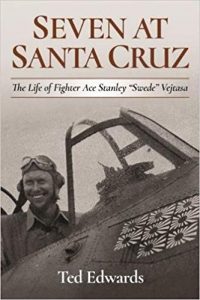 Seven at Santa Cruz: The Life of Fighter Ace Stanly "Swede" Vejtasa, by Ted Edwards (2018 3-4 pp)
Seven at Santa Cruz: The Life of Fighter Ace Stanly "Swede" Vejtasa, by Ted Edwards (2018 3-4 pp)
Heroic recounting of the exploits of fighter Ace "Swede" Vejtasa who helped sink the Japanese carrier Shoho from his Dauntless dive bomber, miraculously returned to the Enterprise in the dark by following an oil slick...and then downed two dive bombers and 5 torpedo bombers to save his ship.
 Islands of Destiny: The Solomons Campaign and the Eclipse of the Rising Sun, Jon Prados (2012 - 432 pp)
Islands of Destiny: The Solomons Campaign and the Eclipse of the Rising Sun, Jon Prados (2012 - 432 pp)
The critical battle of WW II in the Pacific was not at Midway, where the Japanese suffered the loss of 4 carriers, but in the Southern Pacific in the Solomon Islands. Author Jon Prados legitimately maintains that WW II in the Pacific was won with the many naval, air and ferocious land battles in the Solomons
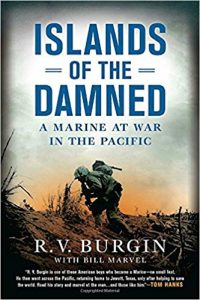 Islands of the Damned: A Marine at War in the Pacific, RV Burgin ( 2011 - 320 pp)
Islands of the Damned: A Marine at War in the Pacific, RV Burgin ( 2011 - 320 pp)
Young Texan, R.V. Burgin joined the Marines never dreaming of the scale and ferocity of the battles he would participate in with the Japanese. This remarkable memoir detailing the steamy jungles, and a ferocious, desperate enemy was featured in HBO's 2017 "The Pacific"
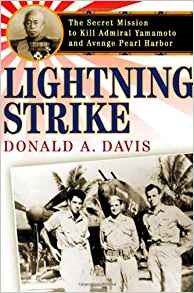
Lightning Strike, by John P. Davis (2006 - 400pp)
FDR personally gave the go-ahead to shoot down Yamamoto when plans for his inspection tour of S.E. Asia were deciphered by U.S. cryptographers.
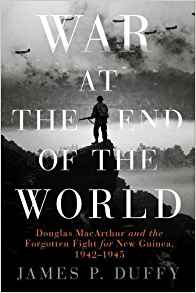
War at the End of the World, by James P. Duffy ((2016 - 448pp)
A dramatic, forgotten narrative of the MacArthur's grinding, systematic campaign to reconquer New Guinea. A brilliant military achievement with MacArthur at his finest
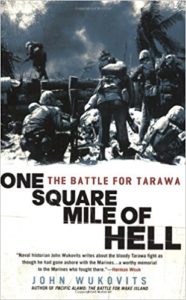
One Square Mile of Hell, by John Wukovitz (2007 - 336pp)
Key to the Eastern pacific, Tarawa was the most heavily fortified war zone in the Pacific and the U.S 2nd Marines most heroic and costly offensive.
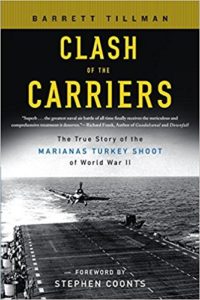 Clash of the Carriers, by Barrett Tillman (2006 - 368pp)
Clash of the Carriers, by Barrett Tillman (2006 - 368pp)
Stirring account of the Battle of the Philippine Sea, a knock-out blow for Japan's navy air which lost 3 carriers, 600 planes and hundreds of pilots.
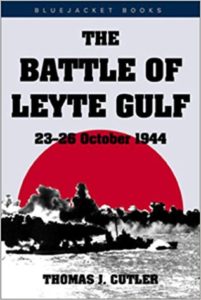
The Battle of Leyte Gulf, by Thomas J. Cutler (1994 - 343pp)
Possibly the largest naval battle in history. Japan came close, but ultimately lost 26 major surface ships and was never again a fighting navy.
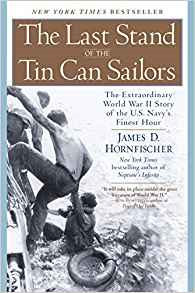
The Last Stand of the Tin Can Sailors, by James D. Hornfischer (2005 - 528pp)
One of the best, most heroic navy stories ever. A small squadron of U.S destroyers held off a far larger enemy battle group and saved the day at Leyte.
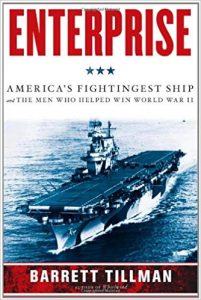 Enterprise: America's Fightingest Ship and the Men Who Won WW II, by Barrett Tillman (2012 - 293 pp)
Enterprise: America's Fightingest Ship and the Men Who Won WW II, by Barrett Tillman (2012 - 293 pp)
The aircraft carrier Enterprise was part of every major sea engagement of WW II - Pacific from the Coral Sea to Midway, Guadalcanal to Leyte Gulf and Okinawa. Severely damaged numerous times, she was America's most storied warship.
 Pacific Thunder: The U.S. Navy's Central Pacific Campaign August 1943 - October, 1944, by Thomas Cleaver ( 2017 - 296 pp)
Pacific Thunder: The U.S. Navy's Central Pacific Campaign August 1943 - October, 1944, by Thomas Cleaver ( 2017 - 296 pp)
The USS Hornet, famed for the Doolittle Raid, went down in the battle of the Solomon Islands, leaving the U.S. with only one carrier in the Pacific - the badly damaged Enterprise. From that moment, the U.S. gradually built the new Essex class carriers that carried it through the end of the war and helped win the war in the Central Pacific.
 Whirlwind: The Air War Against Japan 1944-1945, by Barrett Tillman
Whirlwind: The Air War Against Japan 1944-1945, by Barrett Tillman
(2011 - 336 pp)
Gritty account of the air war waged by Gen Curtis LeMay in which 67 Japanese cities were firebombed, destroying over 50% of their geographical area.
Click Here to Continue to WW II - Pacific (3 of 4)
